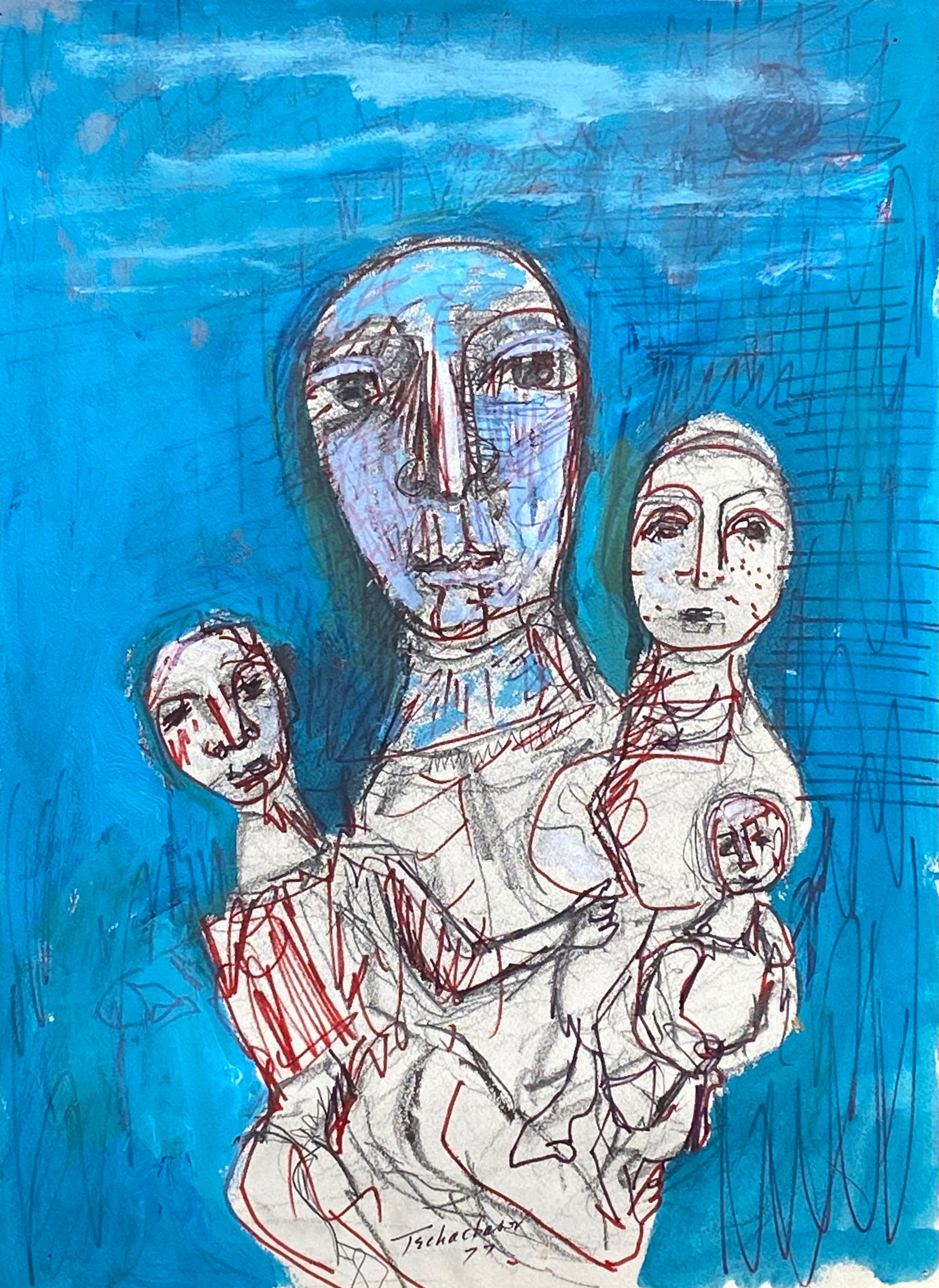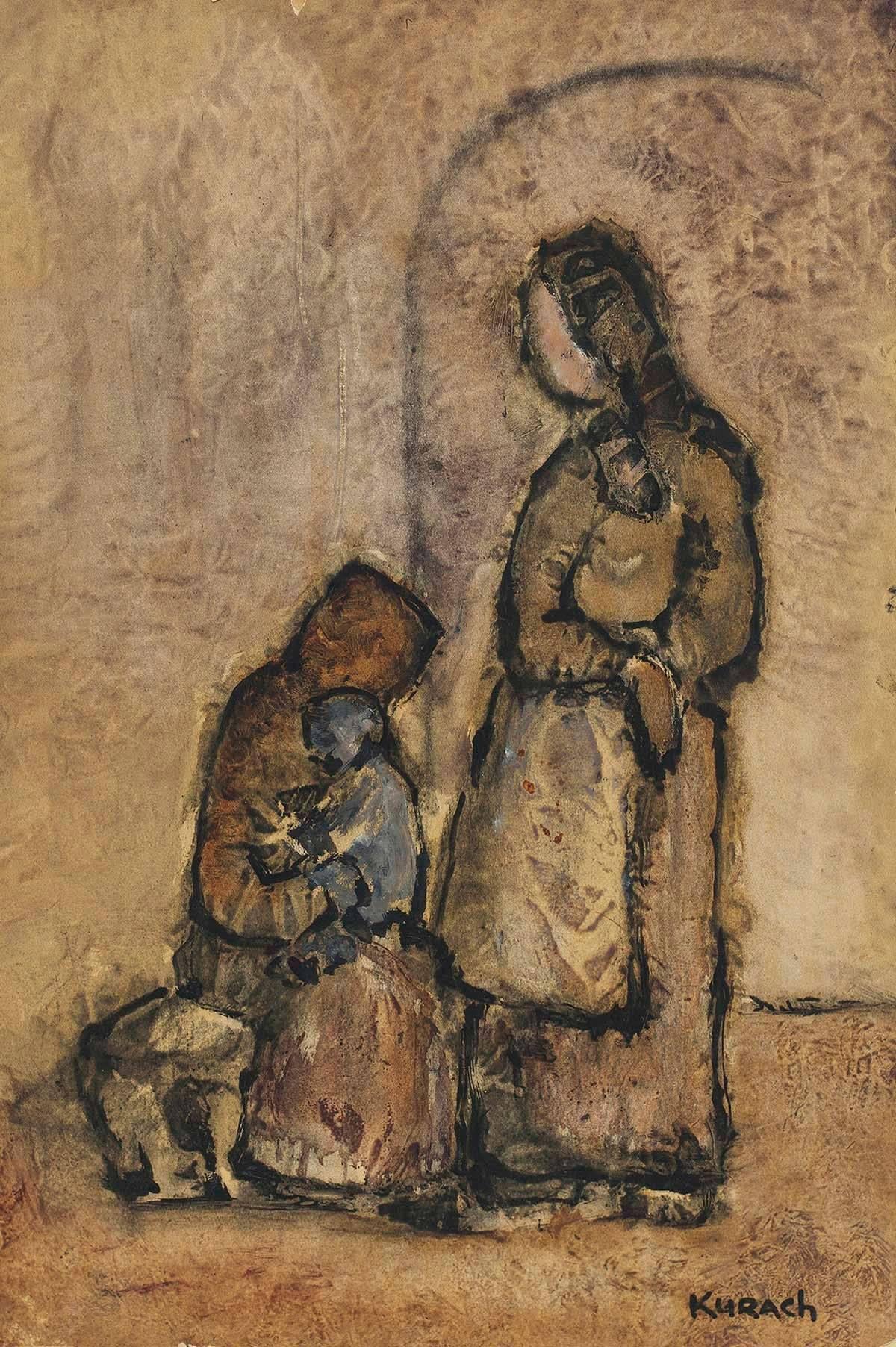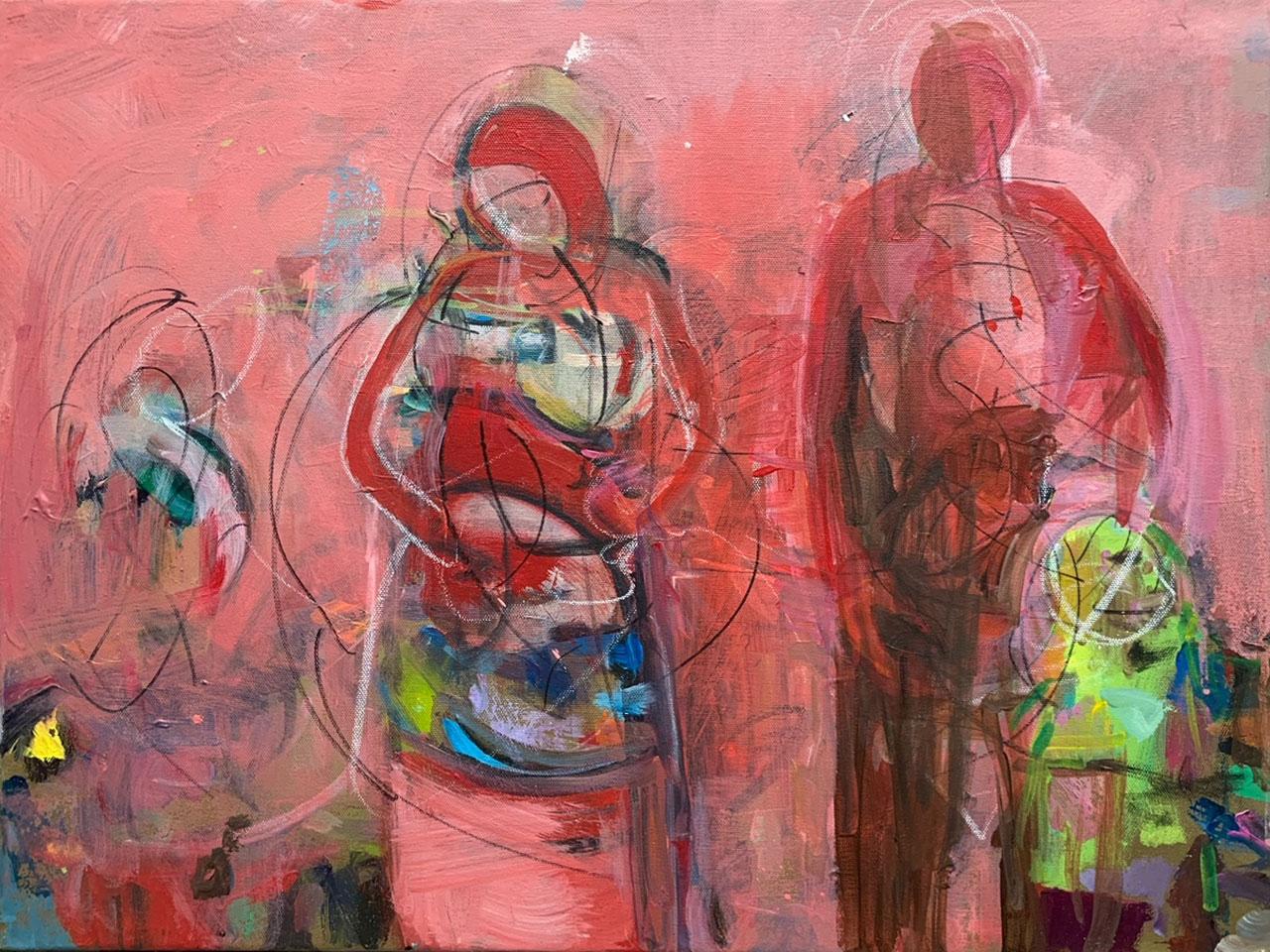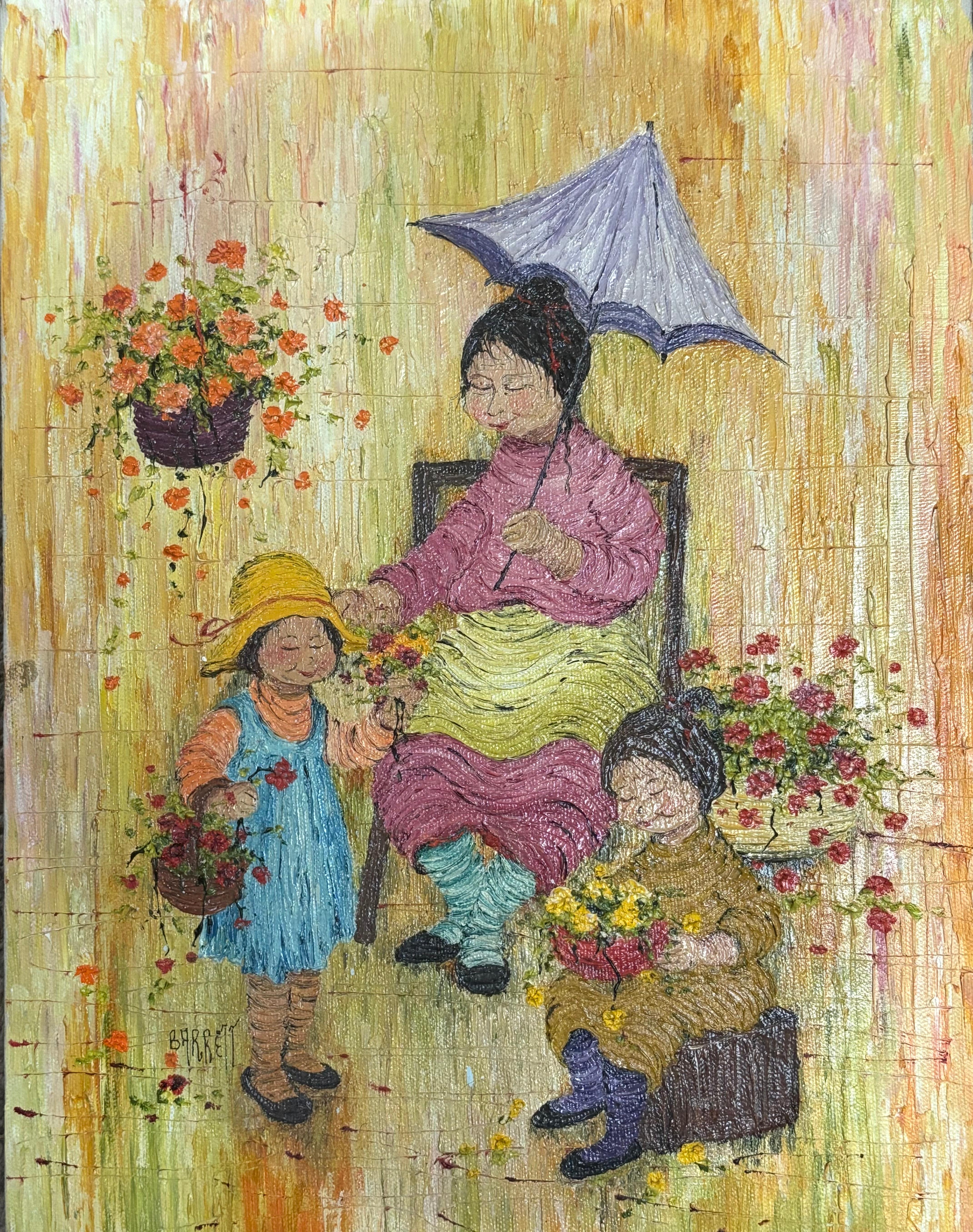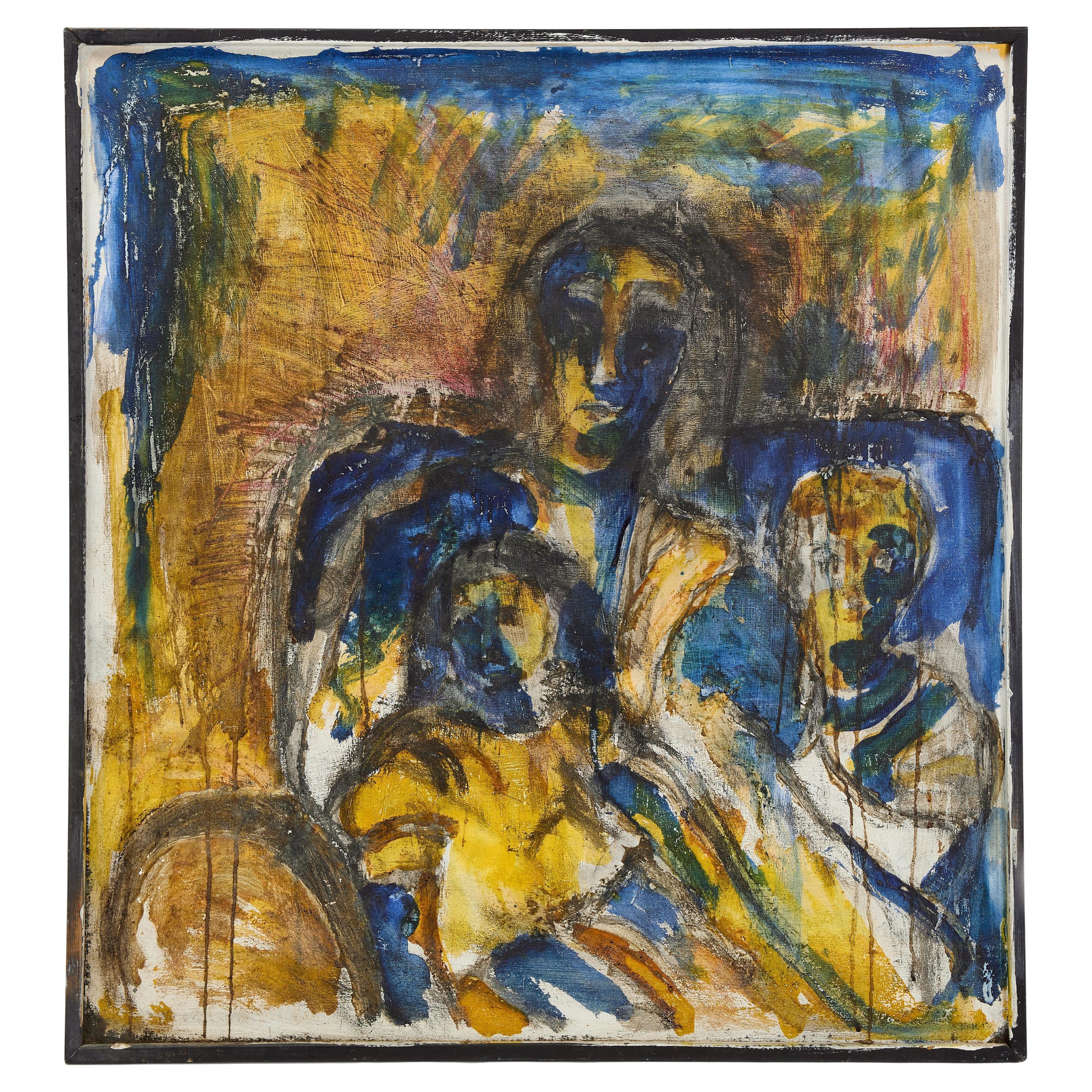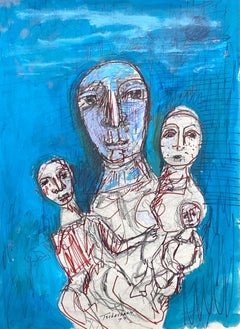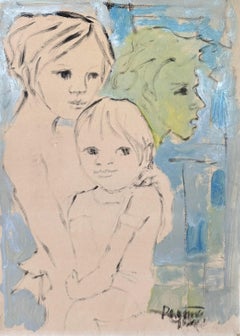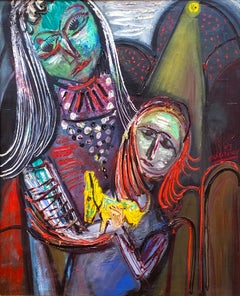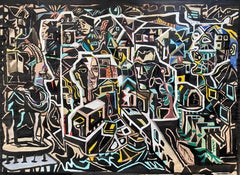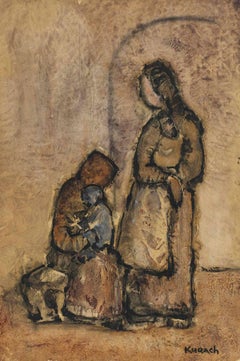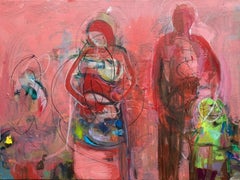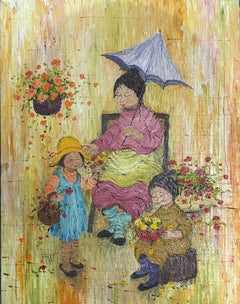Items Similar to “Three Children”
Want more images or videos?
Request additional images or videos from the seller
1 of 8
Molla Archer Moss“Three Children”Circa 1958
Circa 1958
$1,500
$1,87520% Off
£1,141.88
£1,427.3420% Off
€1,305.41
€1,631.7620% Off
CA$2,110.52
CA$2,638.1520% Off
A$2,308.56
A$2,885.7020% Off
CHF 1,215.52
CHF 1,519.4020% Off
MX$27,561.88
MX$34,452.3520% Off
NOK 15,491.99
NOK 19,364.9820% Off
SEK 14,171.47
SEK 17,714.3420% Off
DKK 9,750.04
DKK 12,187.5520% Off
About the Item
Original, rare work by the American female artist Molla Archer Moss. A mixed media work of oil on paper of three young children with the addition of wax sticks as the secondary medium. Signed “Molla” lower left. Condition is fair to good. Circa 1958. The artwork is under glass and in its original frame. 0verall framed measurements are 29.25 by 25 inches. Provenance: Roko Gallery and Frames, 925 Madison Avenue, New York (stamped verso).
Molla Archer Moss was born in 1916
Molla was a friend and contemporary to Jasper Johns. Molla’s work would often share a synergy to the constructed use of elements and materials upon which Johns is known.
Moss had several New York Exhibitions at the Marian Willard Gallery, East Hampton Gallery and the Rose Fried Gallery during the 1960s.
Moss is held within the collections of the Smithsonian, The Johnson Museum of Art New York as well as further records of her practice and life being held at the Guggenheim Museum.
- Creator:Molla Archer Moss (1916, American)
- Creation Year:Circa 1958
- Dimensions:Height: 16.5 in (41.91 cm)Width: 13.5 in (34.29 cm)Depth: 1 in (2.54 cm)
- Medium:
- Movement & Style:
- Period:
- Condition:Visible wrinkling of the paper surface.
- Gallery Location:Southampton, NY
- Reference Number:1stDibs: LU1419832802
About the Seller
5.0
Platinum Seller
Premium sellers with a 4.7+ rating and 24-hour response times
Established in 1977
1stDibs seller since 2013
559 sales on 1stDibs
Typical response time: <1 hour
- ShippingRetrieving quote...Shipping from: Southampton, NY
- Return Policy
More From This Seller
View All“Family Group”
By Nahum Tschacbasov
Located in Southampton, NY
Original media artwork by Nahum Tschacbasov composed of watercolor, felt pen, and graphite on archival paper. Signed bottom middle and dated 1977. Condition is excellent. Presently unframed. Provenance: Estate of the artist Nahum Tschacbasov.
Nahum Tschacbasov
Biography :
Russian-American artist Nahum Tschacbasov (1899-1984) is known for his cubo-surrealistic works which feature a strong psychological element. Some of his work bears a resemblance to work of another Russian-American artist--David Burliuk. He was somewhat of a late starter, moving to Paris in 1932 to study under Adolph Gottlieb, Marcel Gromaire and Fernand Leger. He had his first exhibition in Paris in 1934. He then returned to the US where he joined Rothko and Gottlieb at the Galery Seccession. He was one of the co-founders of The Ten, a group of social conscious abstract painters which included Rothko, Gottlieb, Joseph Solman and Ilya Bolotowsky, among others.
In 1944, he began to work at Stanley Hayter's Atelier 17, a center for surrealistic ideas. Between 1936 and 1943, he had five one-man exhibitions at the ACA Galleries and participated in five group shows. He also exhibited at the Whitney, the Pennsylvania Academy of Fine Arts, the Knox Albright Museum, the Chicago Institute of Fine Art and Corcoran, among others. His work can be found in the permanent collections of the Met, the Whitney, the Brooklyn Museum and the Jewish Museum.
Tschacbasov has been the subject of two recent retrospective at Fletcher Gallery, Woodstock, NY and Arthur...
Category
1970s Post-Modern Mixed Media
Materials
Watercolor, Archival Paper, Felt Pen, Graphite
“Children”
Located in Southampton, NY
Original acrylic with wash artwork of children on heavy card stock by the Italian born artist, Domenic Guerrera. Signed lower right. Signed verso, Roma (Rome, Italy). Condition is ve...
Category
1990s Contemporary Figurative Paintings
Materials
Acrylic, Cardboard
“Mother and Child”
By Nahum Tschacbasov
Located in Southampton, NY
Original oil on canvas painting by the well known Russian/American artist, Nahum Tschacbasov. Signed middle right and dated 1943. Condition is very good. Unlined canvas. The painti...
Category
1940s Abstract Expressionist Figurative Paintings
Materials
Canvas, Oil
$4,800 Sale Price
61% Off
“Modern Figures”
Located in Southampton, NY
Elaborate and highly detailed mixed media painting of abstract figures in a matrix of shapes. Signed and dated 1955 lower right. Consists of watercolor, gouache with touches of crayon on paper. Condition is good. Matted but not framed.
Neville Manns...
Category
1950s Modern Mixed Media
Materials
Paper, Crayon, Watercolor, Gouache
$1,200 Sale Price
50% Off
“Abstract Figures”
Located in Southampton, NY
Elaborate and highly detailed mixed media painting of abstract figures in a matrix of shapes. Signed and dated 1955 lower right. Consists of watercolor with touches of crayon on paper. Condition is good. Matted but not framed.
Neville Mann...
Category
1950s Modern Mixed Media
Materials
Paper, Crayon, Watercolor
$1,200 Sale Price
50% Off
“Untitled”
By Nahum Tschacbasov
Located in Southampton, NY
Original oil on canvas painting by the well known Russian/American artist, Nahum Tschacbasov.. Signed top left by the artist and dated 1975. Condition is very good. Presently unfr...
Category
1970s Post-Modern Figurative Paintings
Materials
Canvas, Oil
You May Also Like
Three Children Playing, Abstract Expressionist Oil Painting by David Messer
By David Messer
Located in Long Island City, NY
Artist: David Messer
Title: Three Children Playing
Year: circa 1960
Medium: Oil on Canvas, signed verso
Size: 10.75 x 13.75 in. (27.31 x 34.93 cm)
Category
1960s Contemporary Figurative Paintings
Materials
Canvas, Oil
Family of Three, Mid Century Gouache on Paper
By Ivan Kurach
Located in Surfside, FL
Ivan Kurach (1909 – 1968) lived and studied in Italy.
Well known both in Europe and in the United States, his paintings are found in famous private collections and in museums all ov...
Category
Mid-20th Century Modern Figurative Paintings
Materials
Paper, Gouache
Frank Shifreen 'Family 2'
By Frank Shifreen
Located in New York, NY
Frank Shifreen
Family 2
2021
18 x 24 inches
Acrylic on Canvas
Signed, titled and dated on verso
These new works start from polar opposite impulses which juxtapose the purity and be...
Category
2010s Contemporary Abstract Paintings
Materials
Canvas, Acrylic
“Woman with 2 children”
By Mildred Barrett
Located in Warren, NJ
Mildred Barrett Original Painting On Canvas “Woman With Children”. Unframed in good condition measures 14x11
Category
20th Century Paintings
Materials
Oil
Abstract with Mother and Children - Oil on Canvas
Located in Branford, CT
Abstract painting of a mother with children. Oil on canvas, circa 1960.
Signed, lower right.
Category
Mid-20th Century Paintings
Materials
Paint
Contemporary art, the family, figures, Paul Guiragossian.
By Paul Guiragossian
Located in La Canada Flintridge, CA
Here is one of Paul Guiragossian's 1960s oil paintings on canvas. The artwork's size, without the frame, is 31 x 23 inches. The overall composition represents a family, with the figu...
Category
1960s Abstract Expressionist Figurative Paintings
Materials
Oil
More Ways To Browse
American Female Artists
Female Archer
Rivera Diego
Ship Sculptures
Giant Art
Vintage Album Covers
Underwater Nudes
Famous Vintage Paintings
Los Angeles Photography
Memento Mori
Salvador Dali 1989
Slim Aarons Poolside
Harry Abrams
Joan Miro 1970
Mountain Impressionist Landscape
Art Nudes Women
Grand Central
Yellow Impressionist Paintings
